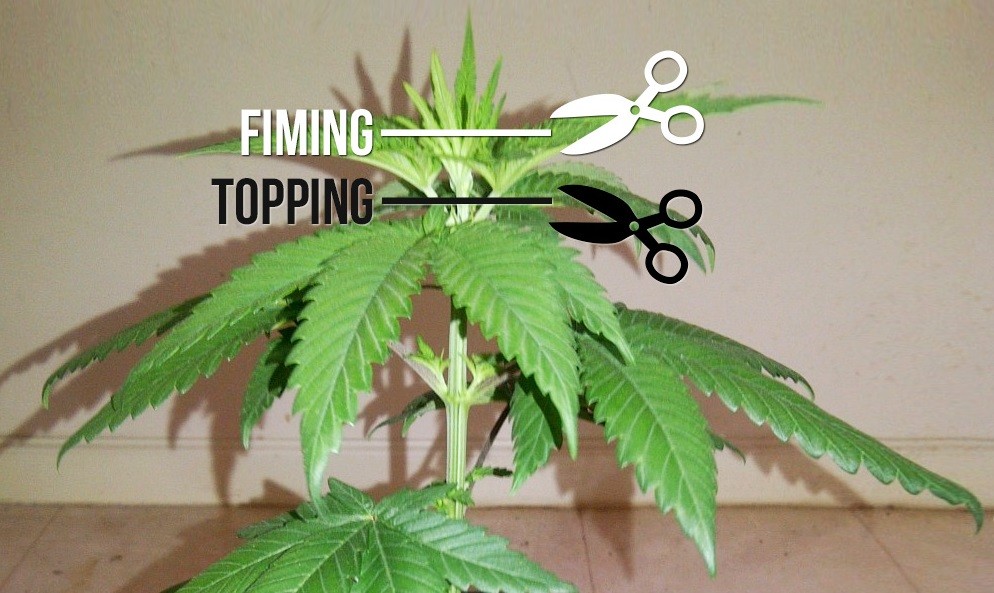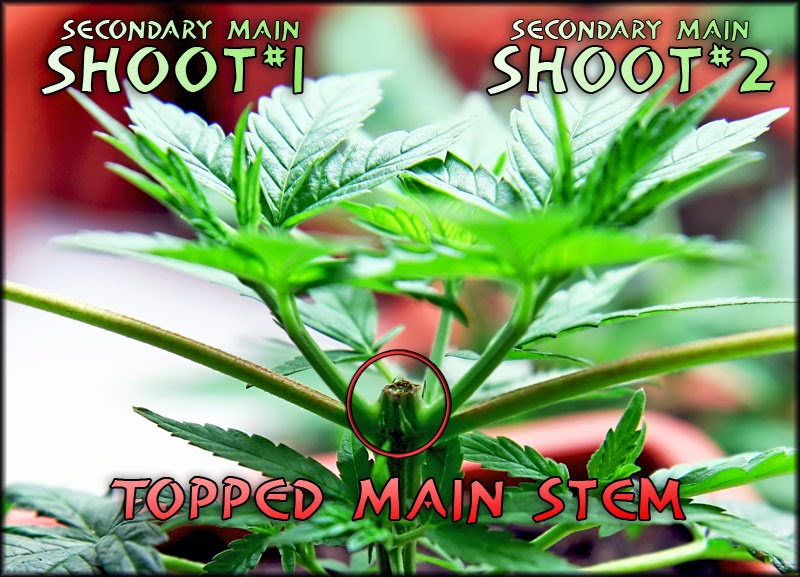There are a variety of cannabis plant training methods to help improve yields and make the most of your grow space. Some examples of plant training methods are low-stress training, main-lining, supercropping. topping, FIMing, defoliation, Sea of Green, etc. The choice of training method may depend on your experience and preferences, but a good basic method to improve yields is known as “topping”.
What is Cannabis “Topping”?
Cannabis topping is a plant training method that is designed to increase lateral growth of your cannabis plant in order to produce a greater yield. When cannabis is left to grow on its own, it tends to produce one main stalk (known as the cola) with a few smaller stalks surrounding it. These small stalks tend to produce small buds and can greatly impact the overall quality and size of the yield.
By “topping” particular sections of the plant, you can train it to produce more cola’s. A greater number of cola’s results in a stronger plant structure and the ability to support a greater number of buds that are larger in size than an untouched plant.
Topping vs. FIMing
There are two methods that are discussed in tandem – fiming and topping:

Topping is considered to be the main plant training method for large, outdoor growers who will often repeat this process many times in order to get large, bushy plants. This technique tends to produce a more stable plant that requires less support. For growers in smaller spaces who wish to get maximum yield, FIMing can be a good method. However, these plants may require more support so it is a good idea to trellis the garden properly.
| Topping | FIMing |
|
|
How to Top Cannabis Plants
Both topping and FIMing are training methods but they vary in stress. Topping is a high-stress method that is used to redistribute growth hormones from a single main cola to multiple colas, in order to grow a larger and higher yielding plant. FIMing is a lower stress method that can help to produce additional cola’s but the plant will require additional structural support.
To be successful, topping and FIMing must be done in the vegetative stage before the plant begins flowering. Typically, the best time to FIM a cannabis plant is when it has developed 3-5 nodes and topping is done at 4-6 nodes. These nodes should all be healthy with vibrant color to ensure the plant can handle topping.
Step 1: Preparation
The first step is to prepare for the topping process. You will need a razor blade or pair of scissors; whichever tool you choose it should be very sharp to prevent tearing and should be disinfected prior to use.
Step 2: Make The Cut
Topping is done by removing the newest growth off the major stem. Topping is different from FIMing in that the cut tends to be made much lower. The result is that the plant will grow two strong new stalks from where you cut.
The use of Low-Stress Training can help create additional colas when combined with Topping as well. When it comes to FIMing, the process result in 3-8 new stalks, but the plant will not be as well supported.

Step 3: Observe
Once you have topped your plant, you need to monitor the results. Topping results in energy being dispersed more evenly throughout the plant and you may see some of the lower branches “catch up” to the newly trained stalk. This process can take a couple of weeks for the plant to complete and recover, in which case you can re-top if necessary to get the desired structure.
Are You Harvest Ready?
Topping or FIMing your cannabis garden will result in a greater number of cola’s and a greater yield of bud – all which will need to be trimmed for consumption! In large commercial greenhouses and outdoor grow spaces, plant training can very quickly double or triple the yield. This is where a bud trimming machine such as the CenturionPro Original comes in handy! The CenturionPro Original is capable of trimming up to 18lbs per hour of dry product (or 90lbs of wet) and can do the work of 25 human trimmers! This not only makes trimming a breeze but it means you can put your energy right where you want it – into growing!



